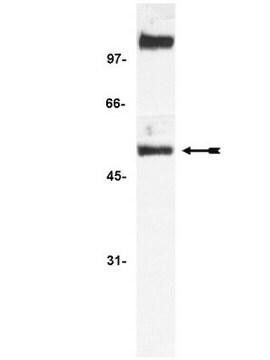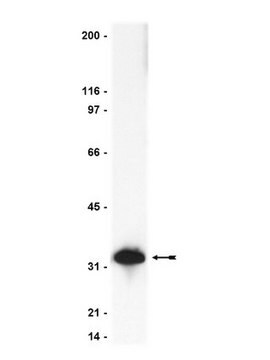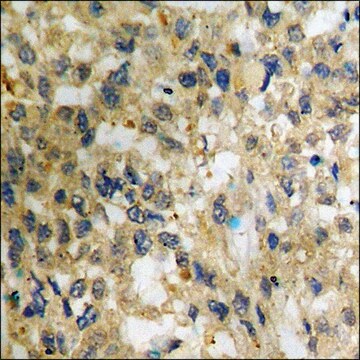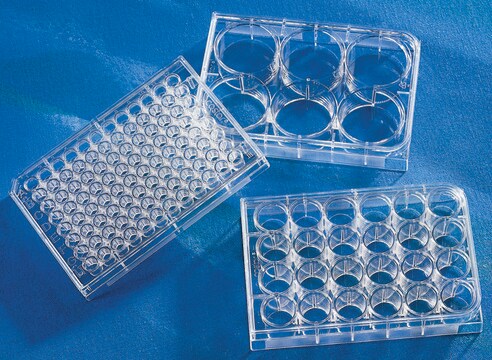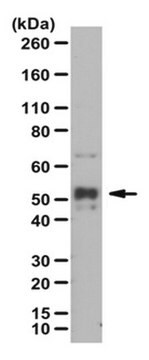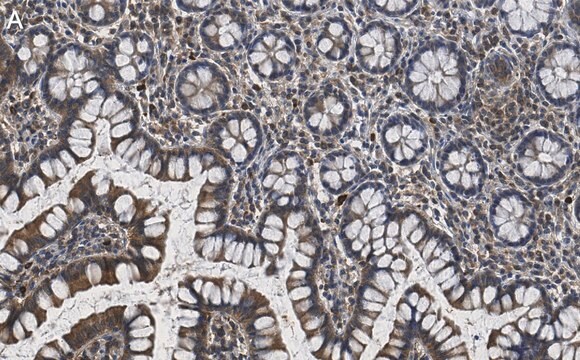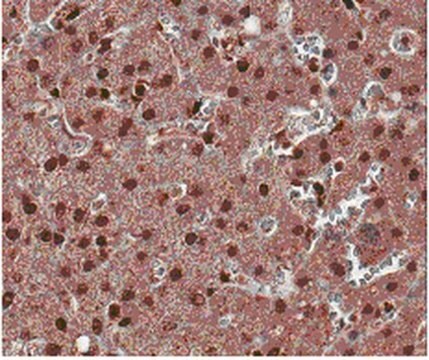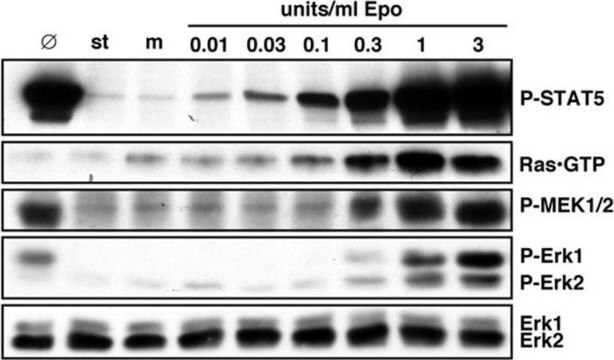05-361
Przeciwciało anty-NFκB p52
Upstate®, from mouse
Synonim(y):
Czynnik wiążący DNA KBF2, chromosom 10 translokacji limfocytów, onkogen Lyt-10, czynnik jądrowy wzmacniacza genu łańcucha lekkiego kappa w komórkach B 2, czynnik jądrowy wzmacniacza genu polipeptydu lekkiego kappa w komórkach B 2, czynnik jądrowy polipeptydu lekkiego kappa w komórkach B 2, czynnik jądrowy polipeptydu lekkiego kappa w komórkach B 2, czynnik jądrowy polipeptydu lekkiego kappa w komórkach B 2.
About This Item
Polecane produkty
pochodzenie biologiczne
mouse
Poziom jakości
forma przeciwciała
purified antibody
rodzaj przeciwciała
primary antibodies
klon
monoclonal
reaktywność gatunkowa
human
producent / nazwa handlowa
Upstate®
metody
electrophoretic mobility shift assay: suitable
immunoprecipitation (IP): suitable
western blot: suitable
izotyp
IgG2a
numer dostępu NCBI
numer dostępu UniProt
Warunki transportu
dry ice
docelowa modyfikacja potranslacyjna
unmodified
Opis ogólny
Specyficzność
Immunogen
Zastosowanie
4 µg poprzedniej partii immunoprecypitowało NFκB p52 i jego prekursor p100 z 500 µg lizatu komórek ekstraktu jądrowego HeLa.
Test przesunięcia żelu:
W poprzedniej partii tego przeciwciała użyto 2 µg na test przesunięcia żelowego (Bours, V., 1993).
Epigenetyka i funkcje jądrowe
Czynniki transkrypcyjne
Jakość
Western Blot Analysis:
0.5-2 µg/mL of this lot detected NFκB p52 and its p100 precursor in HeLa nuclear extract. A previous lot detected NFκB p52 and its p100 precursor in human Raji cell, but not in mouse 3T3/A31 cell and rat PC 12 cell lysates. Highly recommended for western blotting.
Opis wartości docelowych
Postać fizyczna
Przechowywanie i stabilność
Zalecenia dotyczące postępowania:
Po otrzymaniu, a przed zdjęciem nasadki, odwirować fiolkę i delikatnie wymieszać roztwór. Rozdzielić do probówek mikrowirówkowych i przechowywać w temperaturze -20°C. Unikać powtarzających się cykli zamrażania/rozmrażania, które mogą uszkodzić IgG i wpłynąć na działanie produktu.
Komentarz do analizy
Pozytywna kontrola antygenu: Katalog #12-303, Lizat komórek Jurkat.
Inne uwagi
Informacje prawne
Oświadczenie o zrzeczeniu się odpowiedzialności
Nie możesz znaleźć właściwego produktu?
Wypróbuj nasz Narzędzie selektora produktów.
polecane
Kod klasy składowania
12 - Non Combustible Liquids
Klasa zagrożenia wodnego (WGK)
WGK 1
Temperatura zapłonu (°F)
Not applicable
Temperatura zapłonu (°C)
Not applicable
Certyfikaty analizy (CoA)
Poszukaj Certyfikaty analizy (CoA), wpisując numer partii/serii produktów. Numery serii i partii można znaleźć na etykiecie produktu po słowach „seria” lub „partia”.
Masz już ten produkt?
Dokumenty związane z niedawno zakupionymi produktami zostały zamieszczone w Bibliotece dokumentów.
Produkty
The term neurodegeneration characterizes a chronic loss of neuronal structure and function leading to progressive mental impairments.
Nasz zespół naukowców ma doświadczenie we wszystkich obszarach badań, w tym w naukach przyrodniczych, materiałoznawstwie, syntezie chemicznej, chromatografii, analityce i wielu innych dziedzinach.
Skontaktuj się z zespołem ds. pomocy technicznej